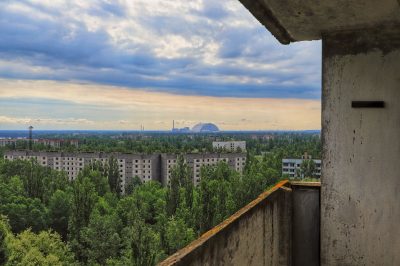The Chernobyl reactor and the ghost town of Pripyat are well known throughout the Western world. Fewer people however do know that the Soviets also used the energy of the nuclear power plant to operate a massive radar installation. The Duga radar station was one of the most powerful and technologically advanced pieces of equipment in the Soviet Union. It was supposed to detect incoming missiles in case of a nuclear attack. Today this massive construction is out of use but can be visited on a tour to the Chernobyl Exclusion Zone.
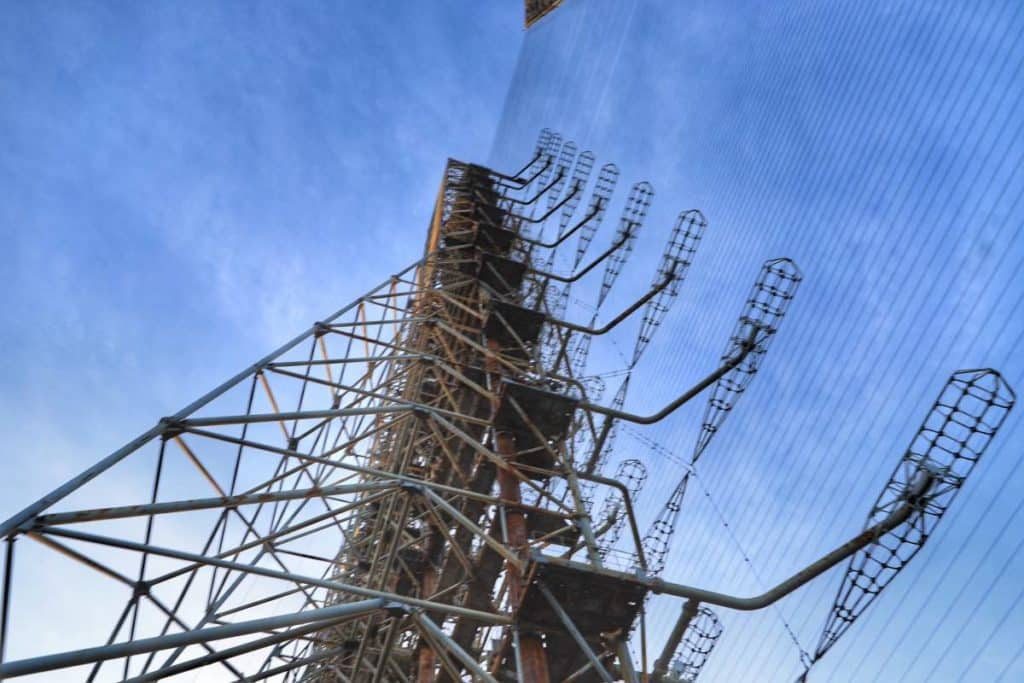
Location of the Duga radar
Duga, Russian for arc or curve, is located in the middle of the forest, about 10 kilometers (6 miles) south of the Chernobyl nuclear power plant. It was maintained as one of the most secret facilities of the Cold War era. Under the camouflage designation “Chernobyl-2”, the strictly shielded area was built in the 1970s. The way to the Duga radar leads through pine forests over roads made of concrete which were typical to lead to military facilities during Soviet times. The operational DUGA complex was based in Chernobyl and Komsomolsk on Amur. At these sites, transmitting and receiving antennas were locally separated in order to be able to cover the North American continent by means of cross direction finding.
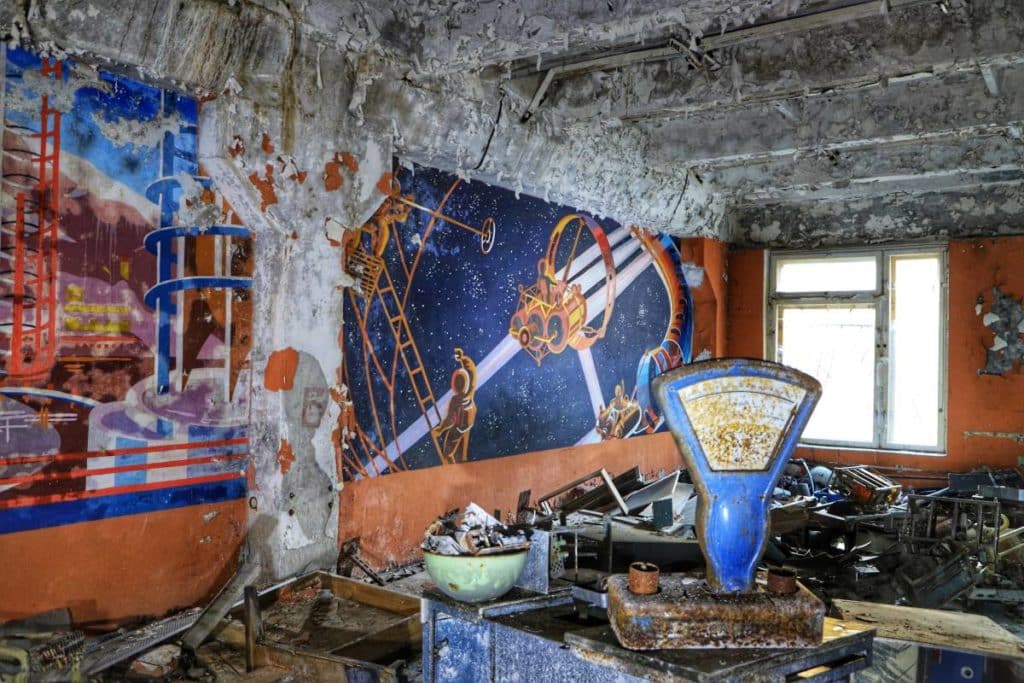
Eine Kleinstadt für das Radar
In addition to the military area, a barracks was maintained in the immediate vicinity, as well as a separate settlement for the families of military personnel, including a school, a kindergarten, a hospital and a cultural center. A specially shielded military town was also built near the power plant because of the immense amount of electricity it consumed. But the two antennas, almost 700 meters long and about 150 meters high, could not really be hidden from prying eyes.
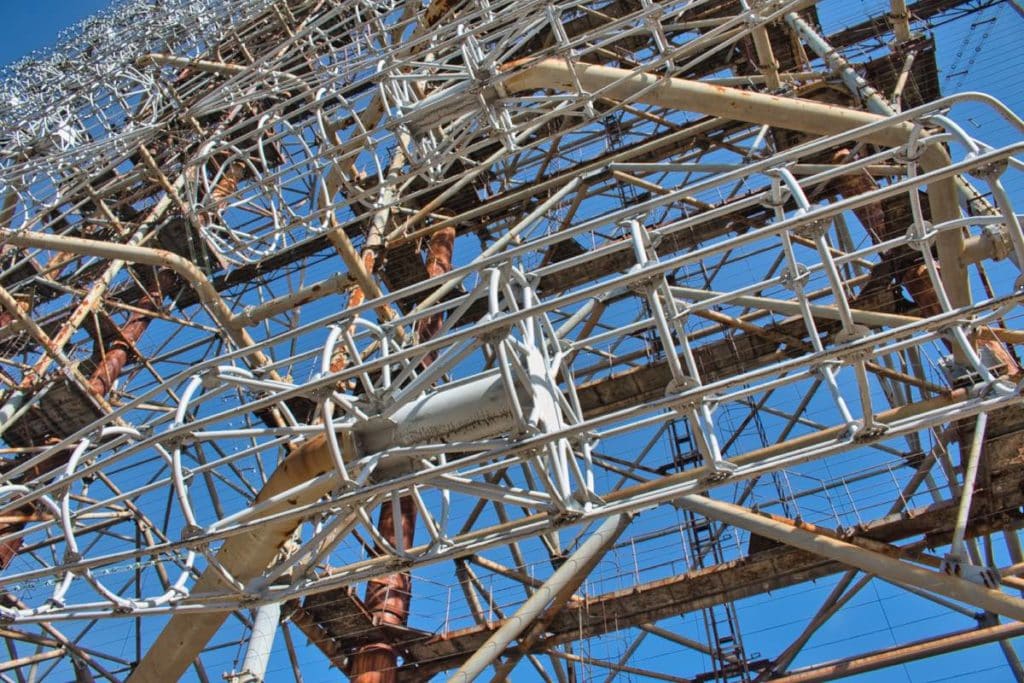
The Duga radar as part of the Soviet missile tracking system
The Duga radar was considered an elementary part of the Soviet early warning system for incoming missiles. The two huge receiving antennas were intended to detect the launch of American bomber formations and intercontinental ballistic missile launches at a range of up to 15,000 kilometers in the event of an emergency, thus ensuring an advance warning time of around 30 minutes. In those 30 minutes, the Soviet Union’s counterstrike would have been launched and the Warsaw Treaty Coalition states would have been alerted. In the hinterland of the USSR’s external borders, various prototypes of these over-the-horizon radars were erected in the 1960s to test the technical capabilities of detecting distant aerial targets. It was an important tool for a possible nuclear counterstrike.
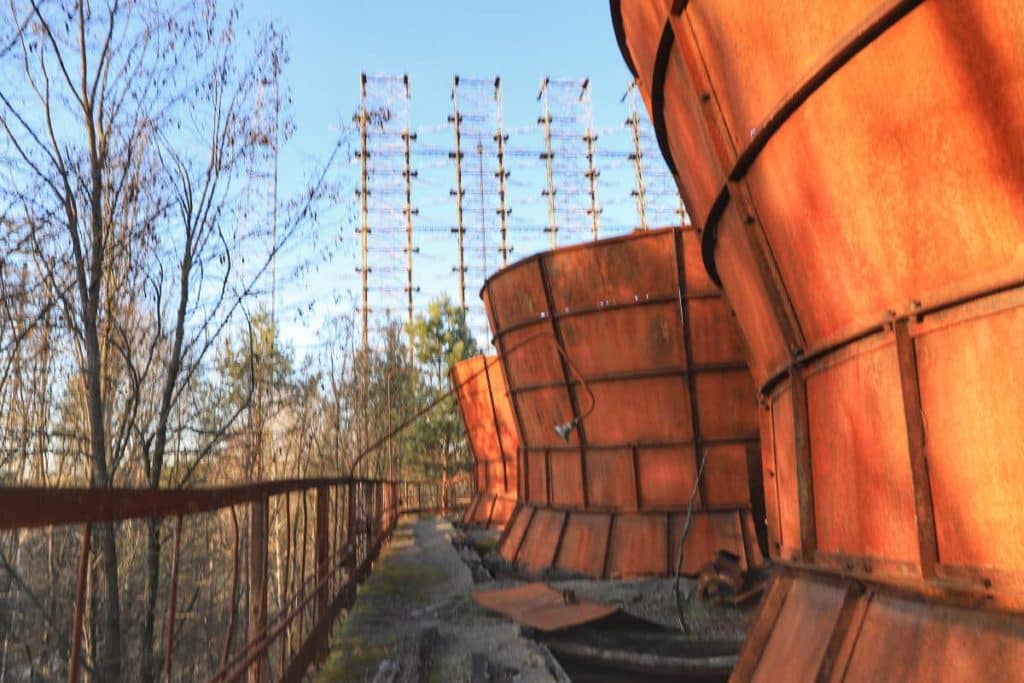
Disturbing radio signals worldwide
The antenna’s characteristic radar signal could be heard on shortwave in large parts of the northern hemisphere. The signal resembled the tapping sound of a woodpecker, hence the facility was quickly nicknamed the “Russian Woodpecker”. Quite a few people in the West even believed that this system was used for mind control by the Soviets, which of course was bogus. After the accident at the power plant, the military site was subsequently closed. In 1989 the last of the signals was received.
Shutdown due to ease of tensions
It is assumed that the Soviet Union ceased the radars operation because of an ease in the tensions caused by the Cold War. The radar was thought to not be needed anymore. However the Russian government announced in 2014 that a new radar of similar typ had been built near Nizhniy Novgorod and is in full use since 2016. The experience from the Duga radar in Chernobyl was also used for the establishment.

What can you see on the territory of the Duga radar station?
For some years now, it has been possible to visit both the structural remains of the imposing over-the-horizon radar and the adjacent barracks and residential area. The preserved exercise boards for training purposes in the buildings in the immediate vicinity of the antenna, the main control room, the long accessible supply tunnel and the other buildings in the military part open up impressive perspectives.
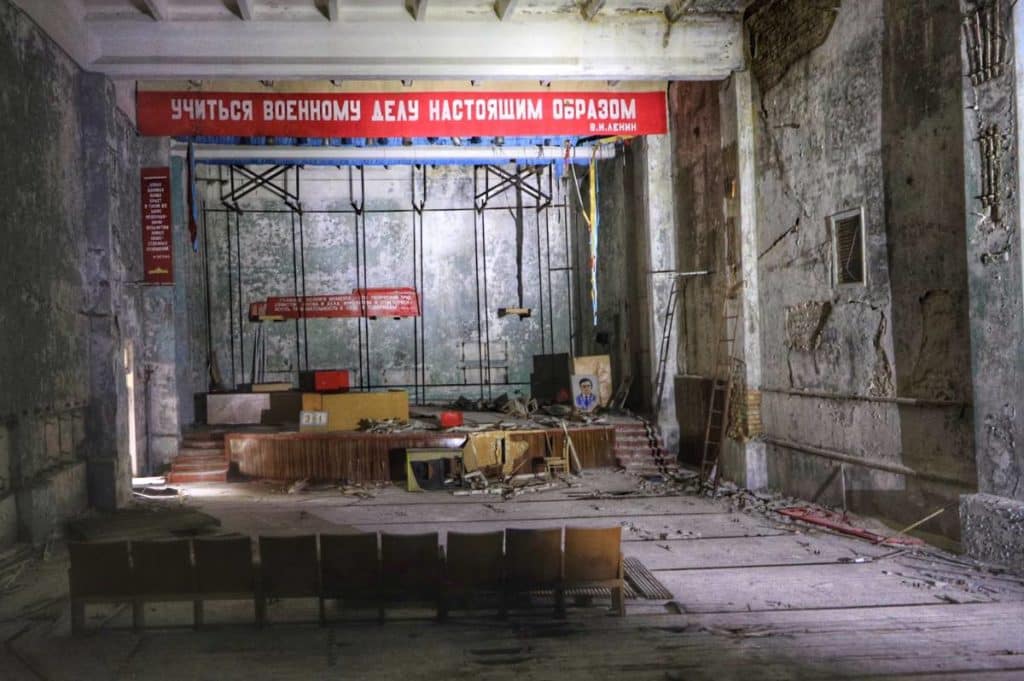

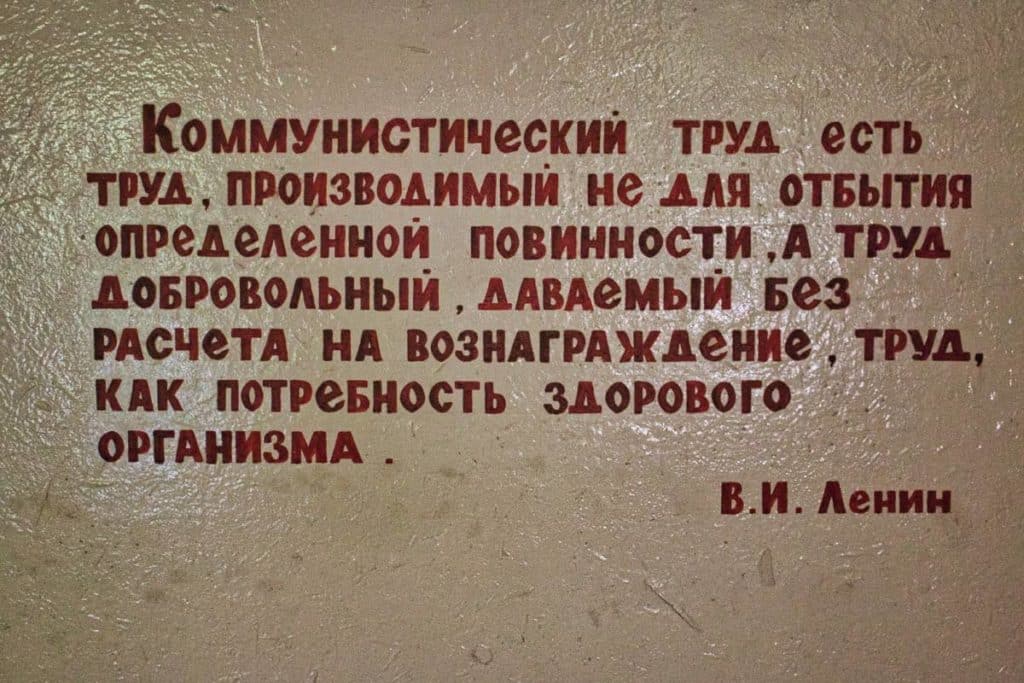
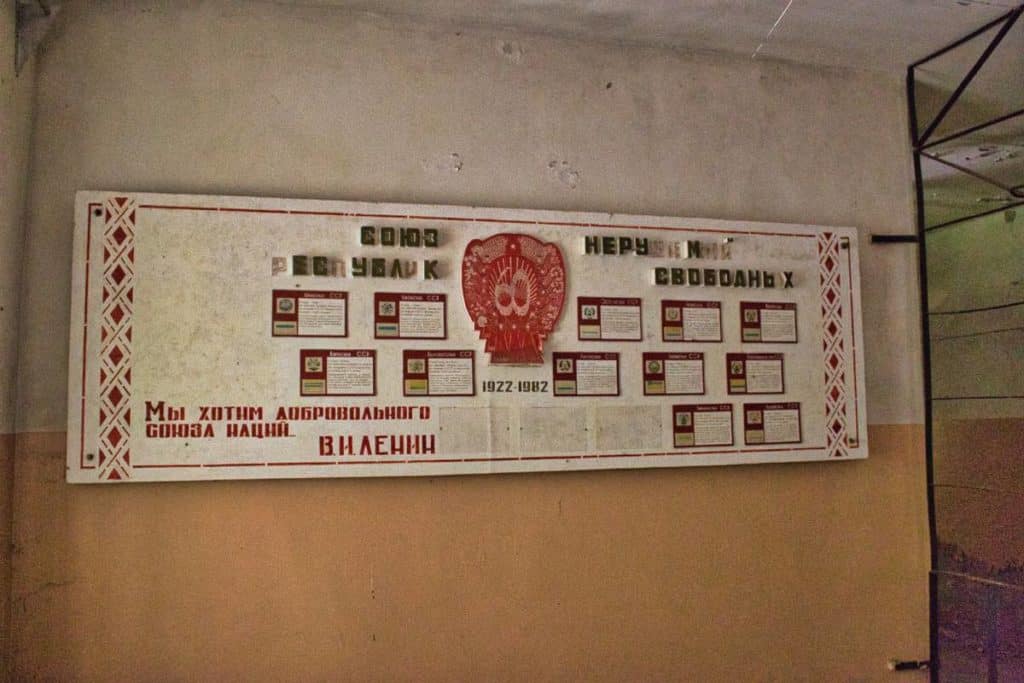
Another special feature are the numerous murals and drawings that were immortalized on the massive wall elements or on the gable ends of the buildings for propaganda and training purposes. During a trip to the restricted zone, you should also plan a visit to the adjacent civilian zone. A model of the entire area in the old fire station, a playground made of dipoles of the receiving antennas in the shape of a rocket and an airplane as well as the still well-preserved school with the kindergarten invite you to exciting explorations.
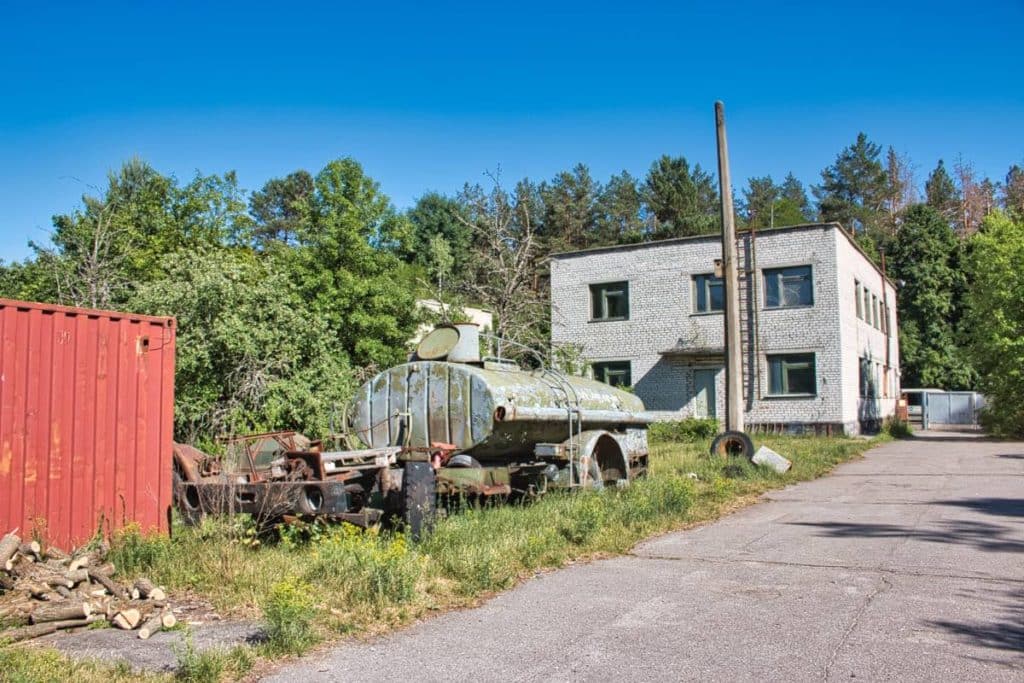
Tarzan and the other Chernobyl dogs
The entrance to the secluded settlement is also the place where the most famous resident of the Chernobyl Exclusion Zone spends most of his time. Tarzan the dog is one of the notorious Chernobyl strays, with whom the visitors of the zone are totally infatuated. He usually spends most of his time at the gate to the Chernobyl-2 settlement, but you can also see him and the other stray dogs at various places in the Chernobyl Exclusion Zone. It’s not a bad idea to buy some meat at a supermarket before boarding the tour bus to have some tasty snacks for these cute little guys.
Tours to the Duga radar on a Chernobyl tour
For a tour through the whole area you should plan several hours. On the regular day trips to Chernobyl from Kyiv there is usually only a short stop here with a walk to the huge antennas. Since this area is still guarded and has only been open to visitors for a few years, the subjects here stand out clearly from those in Prypiat. The object with its state of preservation is one of the best objects in the restricted zone. Therefore, we strongly recommend you to join at least a one-day or better a longer tour and specifically ask if your tour group will also visit the area around the Duga Radar and the adjacent settlement.
In Kyiv, numerous companies have specialized in visiting the closed zone with tourists. They are organizing day and multi-day trips to the closed zone. Visits to the Duga radar are also on the program with most of these tours.
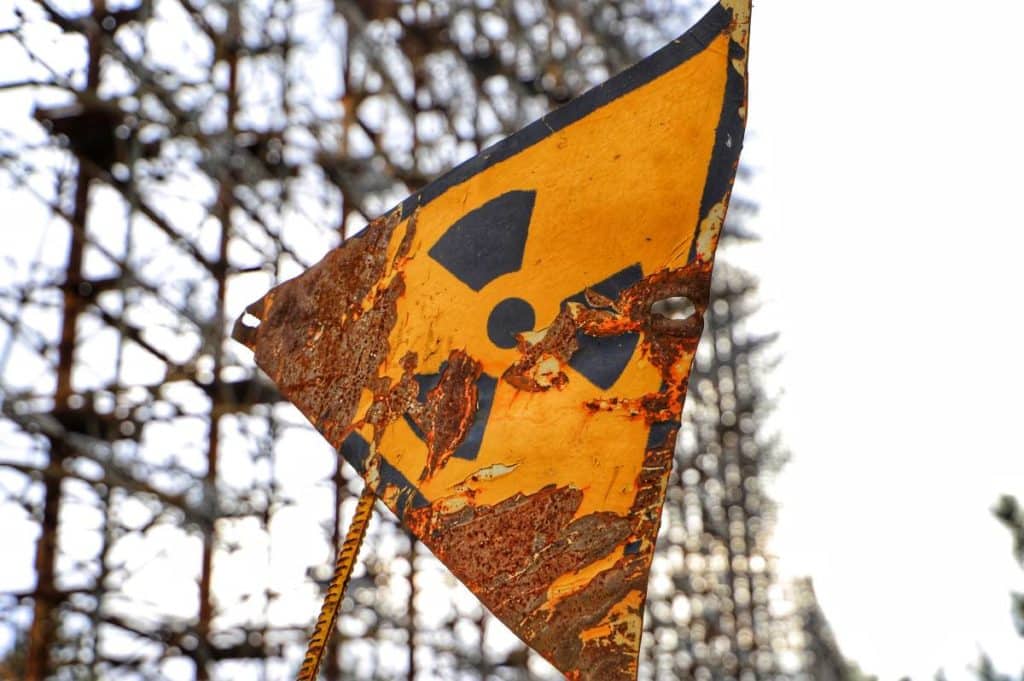
Chernobyl book tips
Besides the many documentaries and TV series, there are excellent books about the Chernobyl Exclusion Zone that give you a deep insight into the history and causes of the nuclear disaster, as well as a great overview of the Chernobyl sites there. One of the books about what happened is the account “Chernobyl 01:23:40: The Incredible True Story of the World’s Worst Nuclear Disaster” by Andrew Leatherbarrow
No products found.
For me, Serhii Plokhy’s book is the best book on Chernobyl so far. It describes many details of the nuclear disaster and, especially for readers who have also seen the series, it adds even more to many of the details that are sometimes very truthfully reproduced there.
No products found.
Svetlana Alexievich spoke with people for whom the catastrophe became the central event of their lives: with sick and dying soldiers, with the widows of liquidators, with mothers and children, highly decorated scientists and with farmers. The results are haunting psychological portraits, literary monologues that tell of people who had to build their future in a world of the dead.
No products found.
One of the world’s collective nightmares, the Chernobyl nuclear accident has long been obscure. Adam Higginbotham interviewed eyewitnesses and spoke with those who had previously worked on the project, and scoured archives for previously unpublished letters and documents to understand how this disaster occurred.
No products found.


